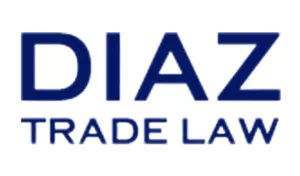Product classification is an internationally shared process among all trading countries. In the U.S., products are classified according to the Harmonized Tariff Schedule of the U.S. (HTSUS). When entering goods into the U.S., the HTSUS- designated 10-digit HTS code is required and used to determine the applicable duty rate. The HTS is declared by the importer and used to assess tariffs, determine eligible free trade agreements, generate trade statistics, and monitor quota or controlled goods.
U.S. Customs and Border Protection (CBP) requires an importer of record, among other responsibilities, to exercise reasonable care to determine the classification of a good, pay the correct duties, and appropriately avail itself of duty saving opportunities like free trade agreements, China tariff exclusions, and other duties. Failing to meet the reasonable care standard exposes an importer to potentially high penalties under 19 U.S.C. 1592 and can subject an importer to detention or seizure of goods.
This article provides a basic overview of the complex process of classification, practice tips on meeting the reasonable care standard, how to effectively classify goods imported into the U.S., and additional resources to assist in the classification process.
Practice Tip: Importers often misclassify their products, partly because the HTS system is complex, and partly because some importers mistakenly believe the duty to correctly classify goods lies solely with their customs broker. Misclassification is a key rationale for CBP enforcement.
HTSUS
The HTSUS is divided into 22 sections, with commodities arranged primarily according to usage and economic activity. Within these sections are 99 chapters arranged according to levels of processing, with primary commodities—such as food products and animals—classified in the earlier chapters and more technically complex products—such as automobiles, machinery—classified later.
Practice Tip: Experts use the following resources to help determine the correct HTS:
- HTSUS
- Explanatory Notes (EN)
- General Notes
- General Rules of Interpretation (GRI)
- Customs Rulings Online Search Systems such CROSS or CBP Binding Rulings
Understanding the HTS's specific structure is the first step to learning how to classify goods. All countries under the WCO have adopted the Harmonized Tariff system and have the same HTS up to the first 6 digits. The structure of the HTS is read from left to right and is structured as follows:
- First Two digits: chapter
- First Four Digits: heading
- First Eight Digits: subheading
- Last Two Digits: statistical suffix
Harmonized Tariff Schedule of the United States Basic Revision 12 (2021)
HTSUS & Structure
The International Trade Commission (ITC) issues the HTSUS annually. The HTSUS is 10-digit import classification system that is specific to the U.S. The first six digits of the 10-digit code encompass the World Customs Organization's (WCO) uniform classification system known as the Harmonized System (HS)—a system shared among more than 200 countries, covering 98% of world trade, and including more than 5000 commodity groups. The last four digits of the HTSUS are assigned by the ITC and specific to the U.S. The following graphic illustrates the structure of the HTS. The U.S. has not adopted the 14-digit code for additional measures.
HTSUS Structure
The HTSUS is broken down as follows within the first column:
- First Two Digits: chapter
- First Four digits: heading
- First Six Digits: international subheading.
- First Eight Digits: complete subheading
- Last Two Digits: statistical suffix
Harmonized Tariff Schedule of the United States Basic Revision 5 (2021)
| HTS Columns | ||||
| Article Description | Units of quantity | Rates of Duty | ||
| 1 | 2 | |||
| General | Special | |||
| Describes the articles contained in the headings and subheadings. | Contains the units of quantity required to be reported when entering goods into the U.S. | Duty rate applied to all WCO countries | Sub-column contains duty rates for special tariff treatment programs such as Generalized System of Preferences (GSP) and the U.S.- Mexico-Canada Agreement (USMCA). | Column 2 duty rates are the highest duty rates imposed on products imported from specifically designated countries. Found in GN 3(b) and reserved for Cuba and North Korea. |
The general duty rates column lists the duty rate for those countries who the U.S. has normal trade relations with. The special duty rate column applies to products from countries that have a preferential tariff program with the U.S.—gaining benefits such as free or lower rates than the general duty rate. Examples of preferential tariff programs include the USMCA or The Dominican Republic-Central America-United States Free Trade Agreement (DR-CAFTA). If the imports are from countries not eligible for either general or special rates, Column 2 duty rates apply.
Practice Tip: If a product is eligible for preferential treatment under more than one preferential tariff program, the lowest rate of duty provided by any one program will be used for the calculation of duty. The blue subscript next to the general duty rate of free, lists other statistical reporting numbers, such as the secondary HTS for China tariffs. When assessing duty rates for the classified products, the HTSs listed in blue subscript and the actual HTS to calculate duties owed to CBP must be used.
Click here to continue reading . . .
Originally published in Bloomberg Law
The content of this article is intended to provide a general guide to the subject matter. Specialist advice should be sought about your specific circumstances.


